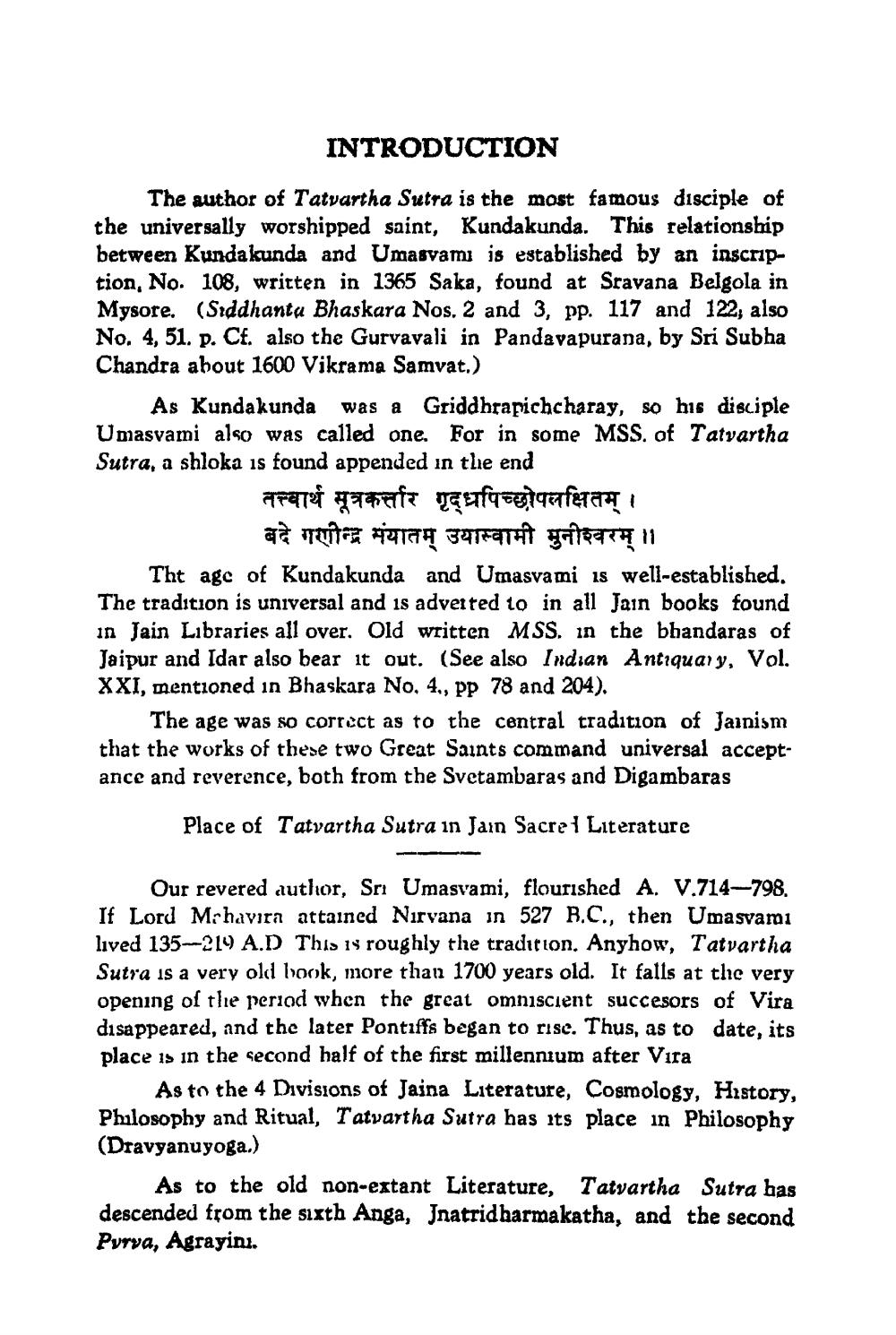Book Title: Tattvartha Sutram Author(s): J L Jaini Publisher: Champat Rai Jain View full book textPage 7
________________ INTRODUCTION The author of Tatvartha Sutra is the most famous disciple of the universally worshipped saint, Kundakunda. This relationship between Kundakunda and Umasvamı is established by an inscription, No. 108, written in 1365 Saka, found at Sravana Belgola in Mysore. (Siddhanta Bhaskara Nos. 2 and 3, pp. 117 and 122, also No. 4, 51. p. Cf. also the Gurvavali in Pandavapurana, by Sri Subha Chandra about 1600 Vikrama Samvat.) As Kundakunda was a Griddhrapichcharay, so his disciple Umasvami also was called one. For in some MSS. of Tatvartha Sutra, a shloka is found appended in the end तत्त्वार्थ सूत्रकर्तार गृध्रपिच्छोपलक्षितम् । बदे गणीन्द्र मंयातम् उयास्वामी मुनीश्वरम् ।। Tht age of Kundakunda and Umasvami is well-established. The tradition is universal and is adverted to in all Jain books found in Jain Libraries all over. Old written MSS. in the bhandaras of Jaipur and Idar also bear it out. (See also Indian Antiquary, Vol. XXI, mentioned in Bhaskara No. 4, pp 78 and 204). The age was so correct as to the central tradition of Jainism that the works of these two Great Saints command universal acceptance and reverence, both from the Svetambaras and Digambaras Place of Tatvartha Sutra in Jain Sacrei Literature Our revered author, Sri Umasvami, flourished A. V.714-798. If Lord Mahavira attained Nirvana in 527 B.C., then Umasvamı lived 135-219 A.D This is roughly the tradition. Anyhow, Tatvartha Sutra is a very old look, more than 1700 years old. It falls at the very opening of the period when the great omniscient succesors of Vira disappeared, and the later Pontiffs began to rise. Thus, as to date, its place is in the second half of the first millennium after Vira As to the 4 Divisions of Jaina Literature, Cosmology, History, Philosophy and Ritual, Tatvartha Sutra has its place in Philosophy (Dravyanuyoga.) As to the old non-extant Literature, Tatyartha Sutra bas descended from the sixth Anga, Jnatridharmakatha, and the second Purva, Agrayini.Page Navigation
1 ... 5 6 7 8 9 10 11 12 13 14 15 16 17 18 19 20 21 22 23 24 25 26 27 28 29 30 31 32 33 34 35 36 37 38 39 40 41 42 43 44 45 46 47 48 49 50 51 52 53 54 55 56 57 58 59 60 61 62 63 64 65 66 67 68 69 70 71 72 ... 187
